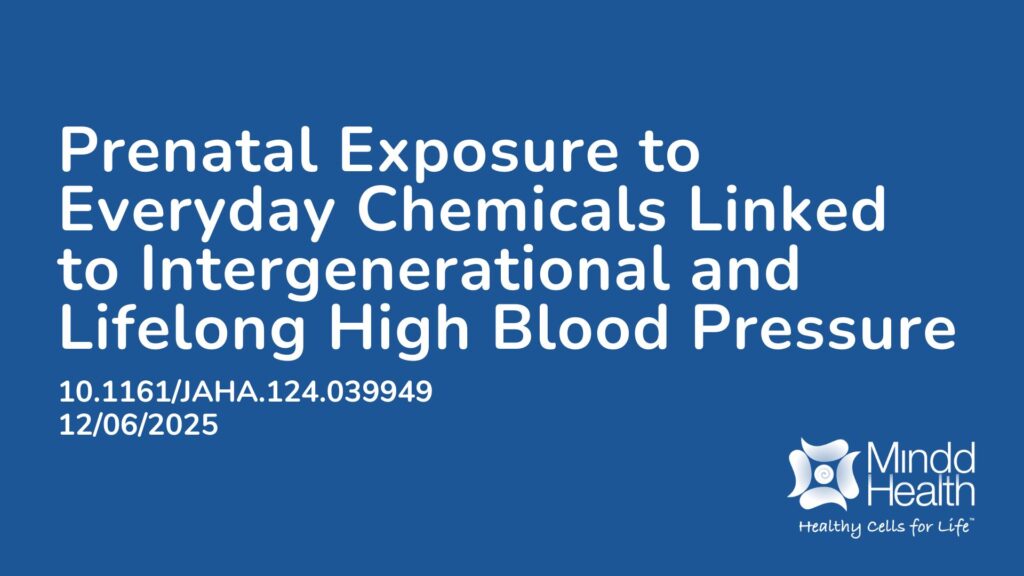Summary:
High blood pressure (BP) is a major risk factor for cardiovascular diseases and is increasingly common in children worldwide. Elevated BP in childhood often leads to hypertension and heart problems in adulthood. Identifying early risk factors is important for prevention. Exposure to environmental pollutants, particularly per- and polyfluoroalkyl substances (PFAS), has been linked to higher BP in children. PFAS are widely used industrial chemicals found in everyday products and persist in the human body for years. They can disrupt biological pathways related to blood pressure, including oxidative stress and metabolism. During pregnancy, PFAS can cross the placenta and affect fetal development. This study examined associations between prenatal PFAS exposure and repeated BP measurements from ages 3 to 18. Researchers measured PFAS in mothers’ plasma shortly after delivery and analyzed children’s BP data from medical records, adjusting for age, sex, height, and other factors. Results from over 1,000 children and 13,000 BP readings showed that higher prenatal levels of certain PFAS compounds were linked to higher systolic BP percentiles in children. In conclusion, prenatal exposure to specific PFAS may raise the risk of higher blood pressure in children, with effects that emerge or strengthen in adolescence. These findings suggest PFAS may have lasting, intergenerational impacts on cardiovascular health.
Abstract:
Background: Prenatal per‐ and polyfluoroalkyl substance (PFAS) exposures may influence offspring blood pressure (BP), but long‐term studies in diverse populations remain limited. Methods: Participants were from the Boston Birth Cohort. We measured PFAS in maternal plasma collected 24 to 72 hours after delivery and extracted children’s BP from medical records. We calculated age‐, sex‐, and height‐specific BP percentiles and defined elevated BP as systolic/diastolic BP ≥90th percentile (ages 3 to <13 years) or ≥120/80 mm Hg (ages 13 to <18 years). We used adjusted mixed‐effects linear and modified Poisson models to examine associations of PFAS with BP percentiles and elevated BP. We used linear spline mixed‐effects models to predict BP trajectories at ages 3 to 18 years by PFAS levels. Results: We included 13 404 BP measurements from 1094 children (median follow‐up: 12 years [interquartile range, 9–15 years]; 61% Black and 22% Hispanic). Overall, higher perfluorodecanoic acid (PFDeA), perfluorononanoic acid (PFNA), and perfluoroundecanoic acid (PFUnA) were associated with higher systolic BP percentile. The associations differed by child life stage, sex, race and ethnicity. For example, associations of PFDeA with systolic BP percentile were stronger in older (β3–5y=0.40; β6–12y=1.06; β13–18y=2.55), male (βmale=1.51; βfemale=0.52), and Black (βBlack=1.75; βHispanic=0.45) children. In male children, each doubling of perfluoroheptanesulfonic acid (PFHpS) was associated with a 9% higher risk of elevated BP at ages 6 to 12 years and a 17% higher risk at 13 to 18 years, with no increased risk at 3 to 5 years. PFHpS was associated with a dose‐dependent divergence in BP trajectories beginning at age 13 years. Conclusions: Prenatal exposures to certain PFAS were associated with offspring BP, with stronger associations in adolescents, male children, and Black children. Prenatal PFAS exposures may have intergenerational, long‐term, and latent hypertensive effects.
Article Publication Date: 12/06/2025
DOI: 10.1161/JAHA.124.039949



